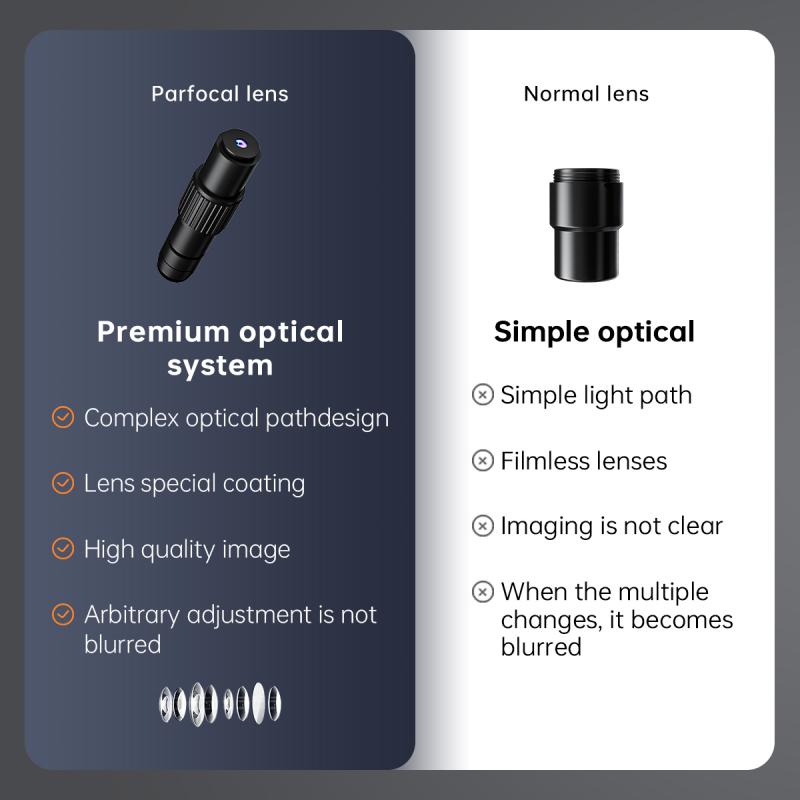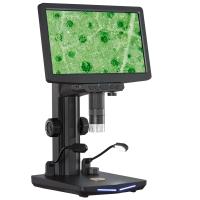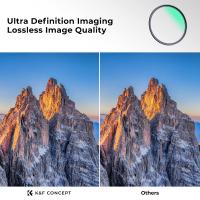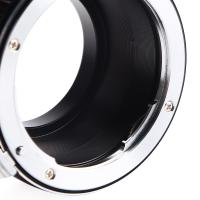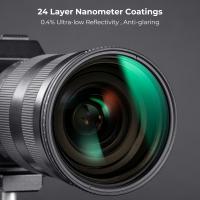Electron Microscope How Does It Work ?
An electron microscope works by using a beam of electrons instead of light to magnify the specimen. The electrons are accelerated through a vacuum and focused onto the specimen using electromagnetic lenses. As the electrons interact with the specimen, they scatter and produce signals that are detected and converted into an image. The image is then displayed on a screen or captured digitally. The high energy of the electrons allows for much higher magnification and resolution compared to a light microscope, enabling scientists to study the fine details of the specimen at the atomic level.
1、 Principle of electron microscopy: Beam generation and focusing.
The principle of electron microscopy revolves around the generation and focusing of an electron beam. Unlike traditional light microscopes that use photons, electron microscopes utilize a beam of electrons to visualize specimens at a much higher resolution. This allows for the observation of extremely small structures and details that are beyond the capabilities of light microscopy.
The process begins with the generation of electrons using an electron gun, typically through a heated filament. The electrons are then accelerated using an electric field towards a series of electromagnetic lenses. These lenses are responsible for focusing and controlling the electron beam. By adjusting the strength and position of the lenses, the beam can be manipulated to achieve the desired resolution and magnification.
Once the electron beam is focused, it is directed towards the specimen. The interaction between the electrons and the specimen produces various signals, such as secondary electrons, backscattered electrons, and transmitted electrons. These signals are then detected and converted into an image using specialized detectors.
The latest advancements in electron microscopy have focused on improving resolution and reducing damage to the specimen. Techniques such as aberration correction and cryo-electron microscopy have significantly enhanced the resolution, allowing for the visualization of atomic structures. Additionally, advancements in sample preparation techniques, such as cryo-fixation, have minimized specimen damage and preserved biological structures in their native state.
In summary, the principle of electron microscopy involves the generation and focusing of an electron beam to visualize specimens at high resolution. Ongoing advancements in electron microscopy continue to push the boundaries of imaging capabilities, enabling scientists to explore the microscopic world with unprecedented detail.
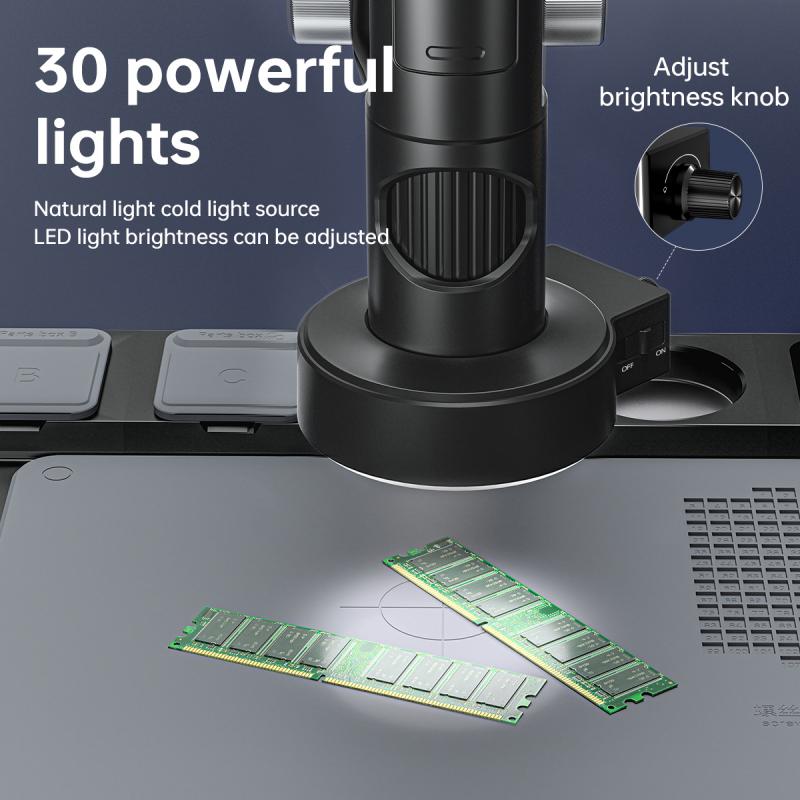
2、 Electron source: Thermionic emission or field emission.
An electron microscope is a powerful tool used to observe objects at a very high magnification and resolution. It works by using a beam of electrons instead of light to create an image. The electron source is a crucial component of the electron microscope, and there are two main types: thermionic emission and field emission.
Thermionic emission involves heating a filament, typically made of tungsten, to a high temperature. This causes the emission of electrons due to the thermionic effect. These emitted electrons are then accelerated towards the sample using an electric field. Thermionic emission is commonly used in older electron microscopes.
On the other hand, field emission involves applying a high electric field to a sharp tip, such as a needle or a small piece of tungsten. This strong electric field causes the emission of electrons from the tip. Field emission electron sources are more commonly used in modern electron microscopes due to their ability to produce a highly focused electron beam.
The emitted electrons are then focused and accelerated using a series of electromagnetic lenses. These lenses control the path of the electrons and allow for precise focusing and magnification of the sample. The electrons interact with the sample, and the resulting signals, such as secondary electrons or backscattered electrons, are detected and used to create an image.
In recent years, there have been advancements in electron microscopy techniques, such as the development of aberration-corrected electron lenses. These lenses correct for aberrations in the electron beam, resulting in even higher resolution images. Additionally, the use of scanning transmission electron microscopy (STEM) allows for the simultaneous imaging and analysis of samples at atomic resolution.
In conclusion, the electron source is a critical component of an electron microscope, and it can be either thermionic emission or field emission. Both methods involve the emission of electrons, which are then focused and accelerated to create high-resolution images. Advancements in electron microscopy techniques continue to push the boundaries of what can be observed at the atomic scale.

3、 Electron beam manipulation: Lenses, apertures, and deflectors.
The electron microscope is a powerful tool used in scientific research to visualize objects at a much higher resolution than traditional light microscopes. It operates on the principle of using a beam of electrons instead of light to illuminate the sample, allowing for much greater magnification and detail.
One of the key components of an electron microscope is the electron beam manipulation system, which consists of lenses, apertures, and deflectors. These components work together to control the path and focus of the electron beam.
Lenses in an electron microscope are electromagnetic coils that generate magnetic fields. These fields are used to focus and shape the electron beam as it passes through the microscope. By adjusting the strength and position of the lenses, the beam can be focused to a fine point, allowing for high-resolution imaging.
Apertures are small openings in the electron microscope that control the size and shape of the electron beam. They are used to limit the spread of the beam and improve the resolution of the image. By adjusting the size of the aperture, researchers can control the amount of electrons that pass through and ultimately improve the clarity of the image.
Deflectors are electromagnetic coils that are used to steer the electron beam. By applying varying magnetic fields, the beam can be directed to different areas of the sample, allowing for precise imaging and analysis.
In recent years, there have been advancements in electron beam manipulation techniques. For example, aberration-corrected electron microscopy has been developed to minimize distortions in the electron beam, resulting in even higher resolution images. Additionally, the use of advanced computational algorithms has improved the image reconstruction process, allowing for more accurate and detailed representations of the sample.
Overall, the electron beam manipulation system in an electron microscope plays a crucial role in controlling and optimizing the electron beam, enabling scientists to obtain high-resolution images and study the intricate details of various materials and biological samples.

4、 Sample interaction: Scattering, absorption, and secondary electron emission.
The electron microscope is a powerful tool used to observe and analyze samples at a very high resolution. It operates on the principle of using a beam of electrons instead of light to image the sample. The electron microscope can provide detailed information about the structure, composition, and properties of the sample.
One of the key aspects of how an electron microscope works is the interaction between the electron beam and the sample. There are several types of interactions that occur, including scattering, absorption, and secondary electron emission.
Scattering occurs when the electrons in the beam interact with the atoms in the sample. This interaction causes the electrons to change direction and scatter in various directions. By measuring the scattered electrons, information about the sample's structure and composition can be obtained.
Absorption occurs when the electrons in the beam are absorbed by the atoms in the sample. This absorption can result in the excitation of the atoms, leading to the emission of characteristic X-rays. By analyzing the emitted X-rays, the elemental composition of the sample can be determined.
Secondary electron emission is another important interaction in electron microscopy. When the primary electron beam strikes the sample, it can cause the ejection of secondary electrons from the surface. These secondary electrons carry information about the topography and surface features of the sample, allowing for high-resolution imaging.
In recent years, advancements in electron microscopy have led to the development of new techniques and capabilities. For example, aberration correction techniques have improved the resolution and image quality of electron microscopes. Additionally, the integration of electron energy loss spectroscopy (EELS) and electron diffraction techniques has enabled the analysis of chemical bonding and crystal structure at the atomic level.
Overall, the electron microscope works by utilizing the interactions between the electron beam and the sample to provide detailed information about its structure, composition, and properties. Ongoing advancements in electron microscopy continue to push the boundaries of what can be achieved in terms of resolution and analytical capabilities.
